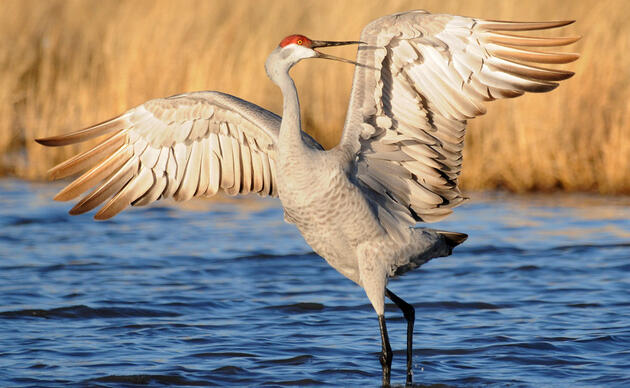At Rowe, our prairies support diverse communities of wildflowers that bloom throughout the spring, summer and fall. However, July is perhaps the most vibrant, colorful, sensory-rich time of the year as an earthly sunset of yellow, orange, purple, white, and pink wash over the prairie.
On a recent walk through one of Rowe’s prairies restored from a crop field back in 2018, staff admired how much the prairie had changed year-to-year. Our goal for the restoration was to make the site more diverse, plant and animal wise, and to fill in a piece of our grassland puzzle to increase habitat connectivity on the sanctuary. To conduct the restoration, seed from over 150 species of prairie plants was spread across the site during the winter months. In the following spring, the site was dominated by forbs like sunflowers and weedy annual plants. As the next few years passed by, the seeds from the restoration mix took root, outcompeting the undesirable plants, which thinned out over time. Late-July is the ideal time to gauge the progress of the restoration- it’s usually the time when you can spot the highest diversity of plants! This July, the prairie was dotted with coneflowers, sunflowers, black-eyed susans, milkweed, white sage, yarrow, bergamot, pitcher sage, milk vetch, and prairie clover. Tall rays of compass plant stretch towards the sun far above other plants while purple poppy mallow drapes the ground like carpet. Our dear friend and volunteer Sylvia Marchetti wrote a beautiful poem reflecting the beauty and diversity of Rowe Sanctuary's prairies in July. Click here to read!
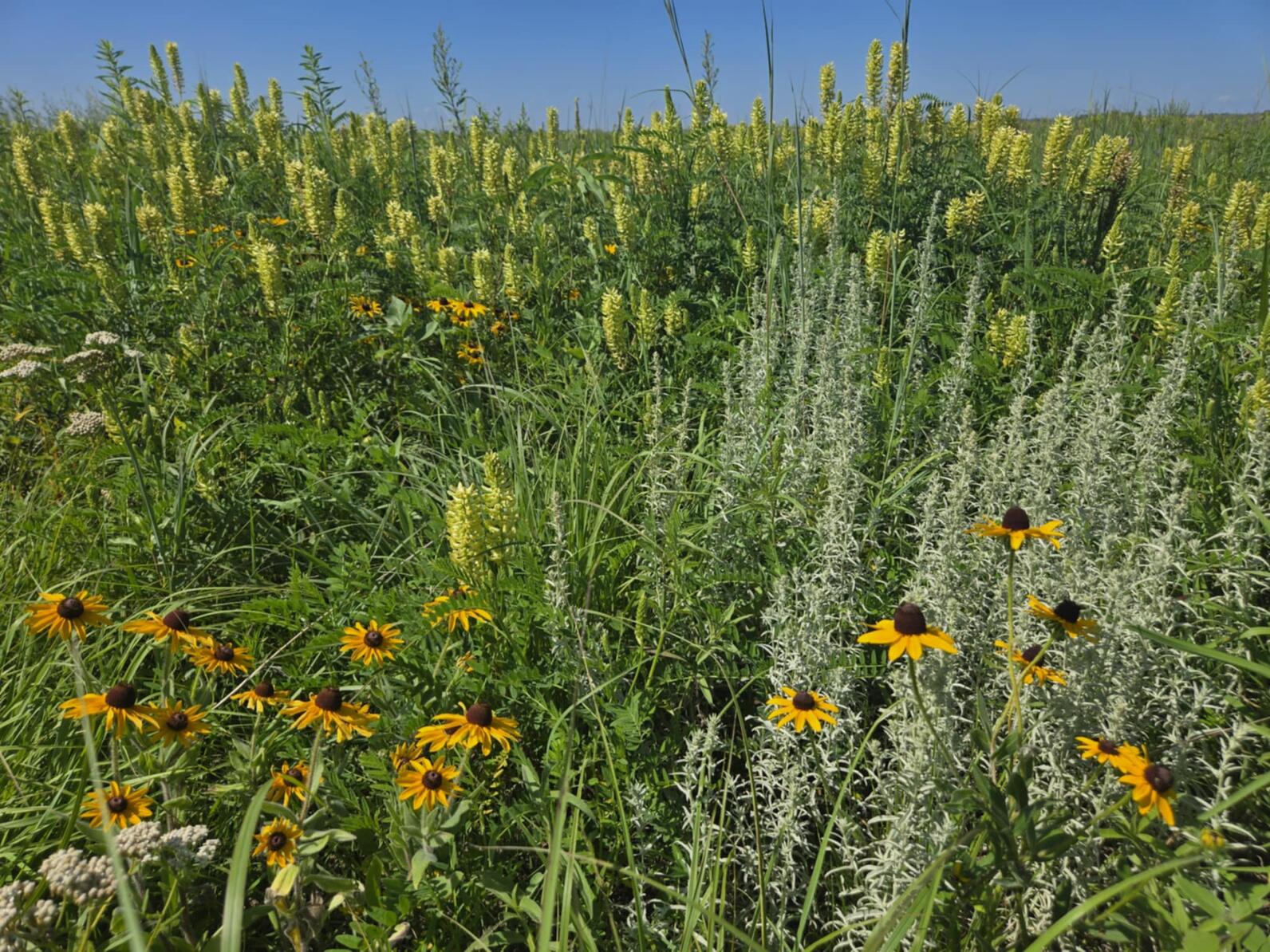
On top of changes that result from the plant community developing over time, annual and long-term precipitation patterns, disturbances such as grazing, and the influx of invasive species, drive the way a restored plant community looks year-to-year. The dynamic, ever-changing nature of prairies brings both excitement and challenges. As we manage this restoration moving forward, we plan to conduct prescribed fire to prevent Eastern red cedar encroachment and introduce spring and fall grazing to mitigate invasive cool season grasses like brome and wheatgrass that are present on surrounding sites. Other than that, we simply plan to monitor the changes year after year!
July is also a colorful time in my home landscaping, where I’ve recently planted a small snippet of my favorite prairie plants. In July, plants such as Blanketflower, Purple Prairie Clover, Nodding Onion, Whorled Milkweed, Beebalm, Black-eyed Susan, and Purple Poppy Mallow are all in bloom. See the full list of native plants in my home landscape below! As I see a suite of pollinators and birds buzz around my native landscape, it reminds me of the role we can all play in the bigger picture!
To learn more about how native plants benefit your local wildlife and view some examples, check out our interactive native plant guide!
https://storymaps.arcgis.com/stories/3a806a0290cd401c9577bfa81661ff2d
Amanda Hegg's Prairie Landscaping
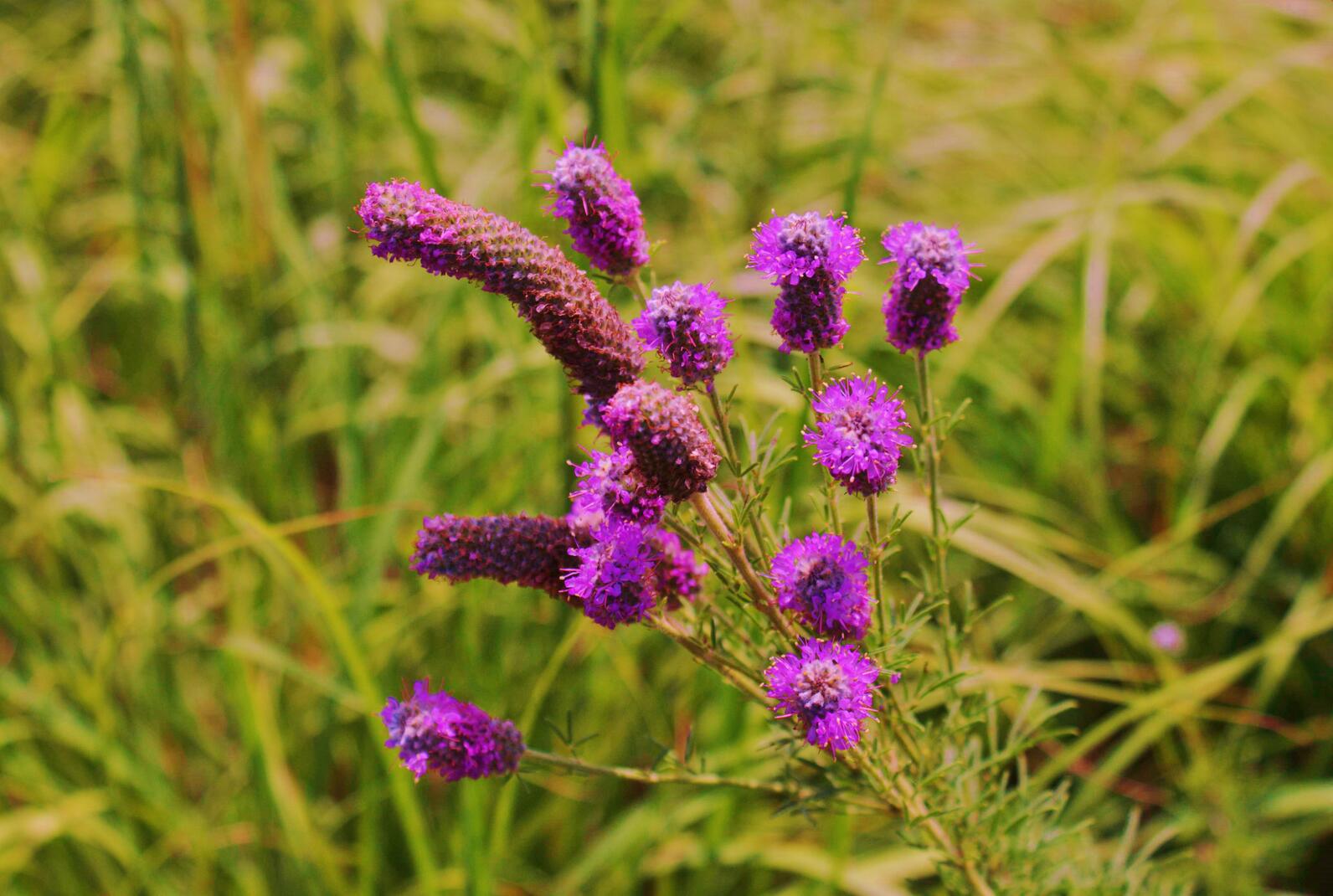 |
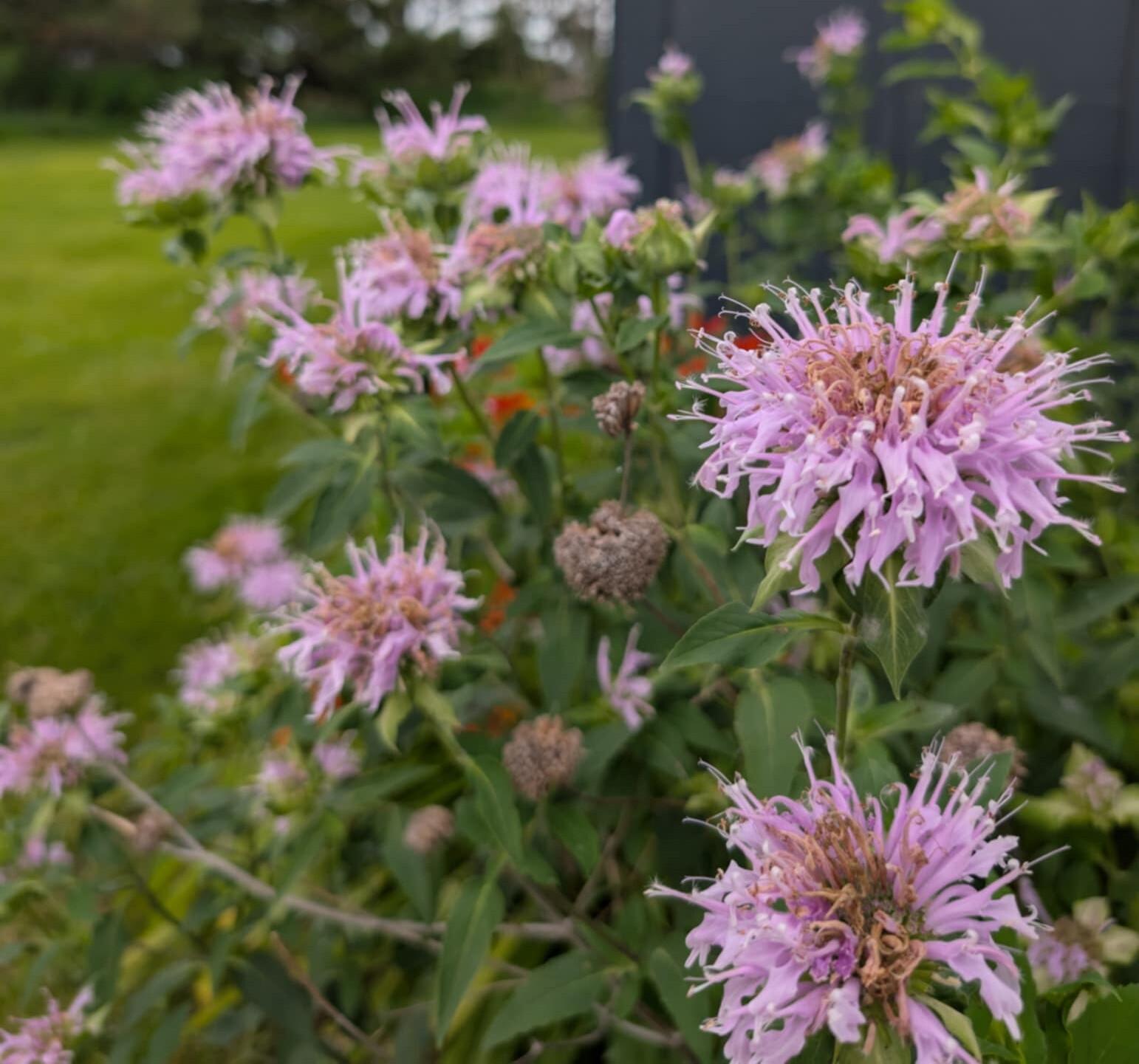 |
 |
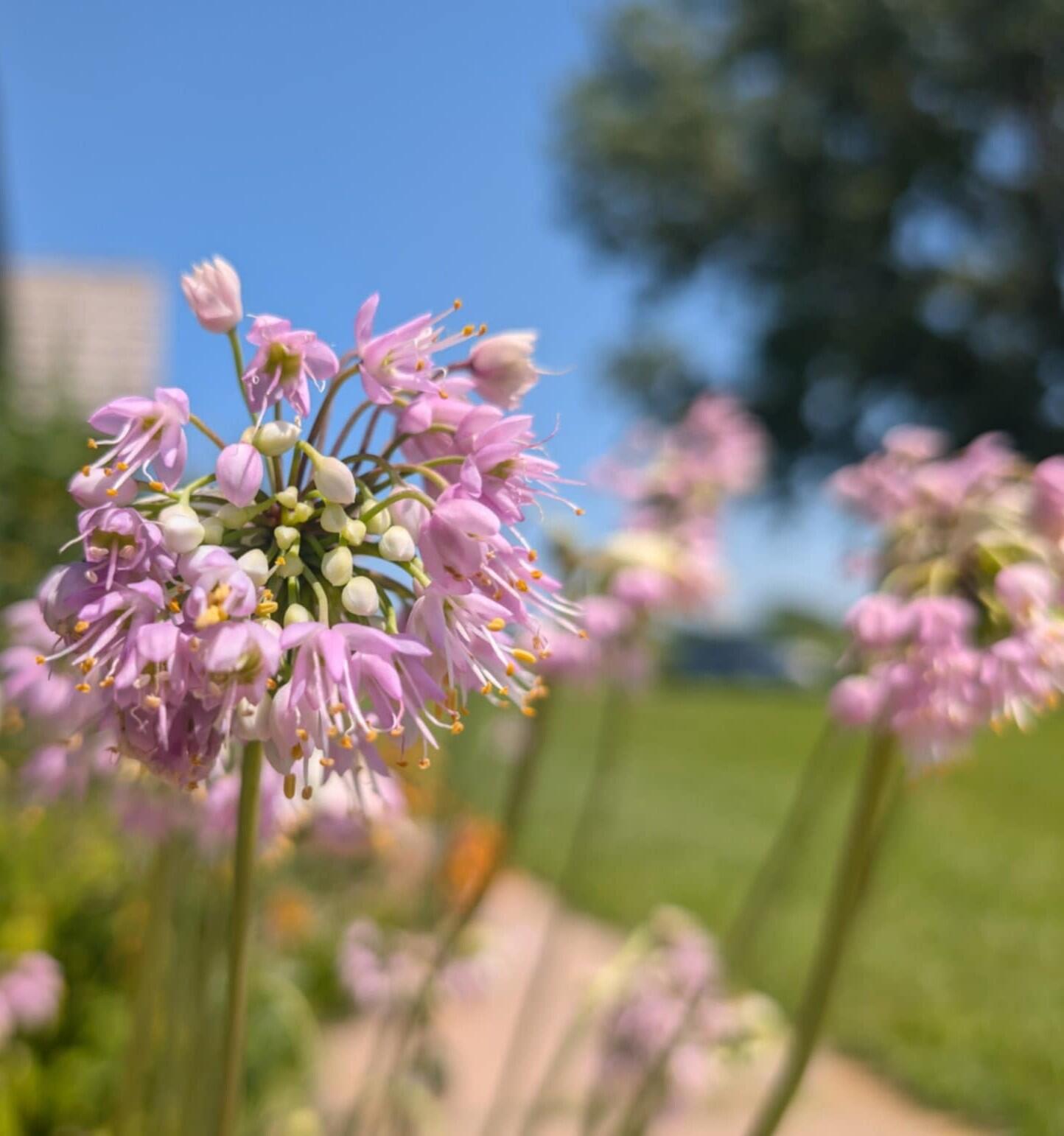 |
Grasses and sedges:
Switchgrass (Panicum virgatum)
Little Bluestem (Schizachyrium scoparium)
Sideoats grama (Bouteloua curtipendula)
Junegrass (Koeleria macrantha)
Palm sedge (Carex muskingumensis)
Plains oval sedge (Carex brevior)
Pennsylvania sedge (Carex pensylvanica)
Rosy sedge (Carex rosea)
Common wood sedge (Carex blanda)
Forbs:
Dotted blazing star (Liatris punctata)
Large-flowered penstemon (Penstemon grandiflorus)
Nodding Onion (Allium cernuum)
Prairie violet (Viola pedatifida)
Aromatic aster (Symphyotrichum oblongifolium)
Common Blue Violet (Viola sororia)
Wild Petunia (Ruellia humilis)
Sweet black-eyed susan (Rudbeckia subtomentosa)
Slender Mountain Mint (Pycnanthemum tenuifolium)
Purple poppy mallow (Callirhoe involucrata)
Anise Hyssop (Agastache foeniculum)
Tall Larkspur (Delphinium exaltatum)
Sky-blue aster (Symphyotrichum oolentangiense)
Blanketflower (Gaillardia aristata)
Rocky Mountain Penstemon (Penstemon strictus)
Plains Evening Primrose (Camissonia contorta)
Pale Purple Coneflower (Echinacea pallida)
Purple Coneflower (Echinacea purpurea)
Orange Rudbeckia (Rudbeckia fulgida)
Prairie Phlox (Phlox pilosa)
Dwarf Blue Indigo (Baptisia australis var. minor)
Dwarf Blazing Star (Liatris cylindracea)
Butterfly Milkweed (Asclepias tuberosa)
Common Milkweed (Asclepias syriaca)
Showy Milkweed (Asclepias speciosa)
Swamp Milkweed (Asclepias incarnata)
Tall Boneset (Eupatorium altissimum)
Sneezeweed (Helenium autumnale)
Showy Goldenrod (Solidago speciosa)
Purple Prairie Clover (Dalea purpurea)



